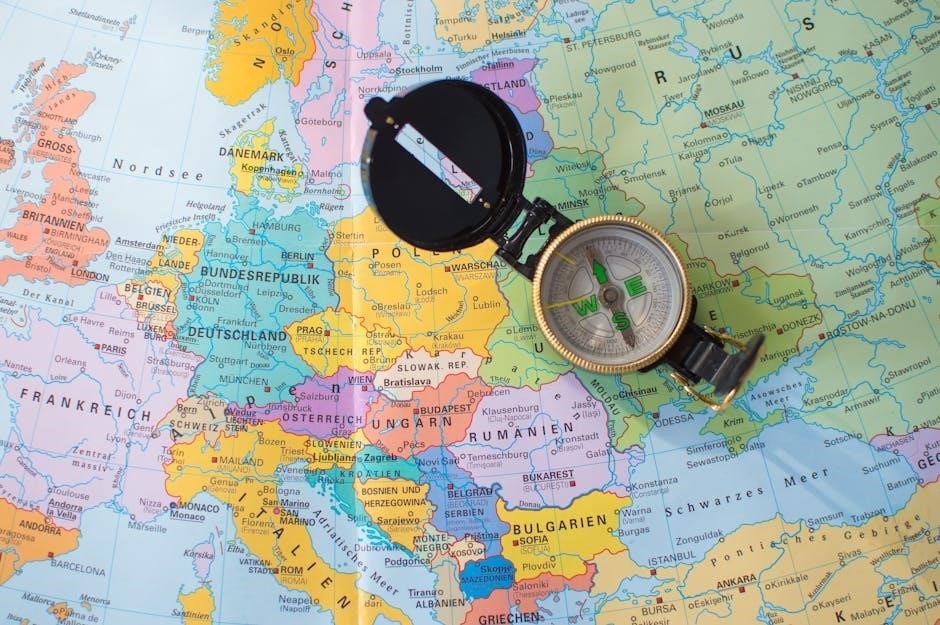
pathfinder bard guide
The Pathfinder Bard is a versatile class, excelling as a skilled performer and support character. With charisma as their primary attribute, they master skills, spells, and inspire allies. Their adaptability makes them a jack-of-all-trades, capable of filling multiple party roles effectively.
Race Selection for Optimal Performance
Choosing the right race for your Pathfinder Bard is crucial, as it enhances their natural charisma, skill versatility, and spellcasting abilities. Each race offers unique traits that can complement the Bard’s jack-of-all-trades nature.
- Half-Elf: Gain a +2 bonus to Charisma, making them ideal for spellcasting and social interactions. Their multitalented trait allows them to excel in multiple skills, perfect for a Bard’s versatility.
- Human: Versatile and adaptable, humans gain a +2 bonus to any ability score, making them excellent for a Bard’s well-rounded performance. Their bonus feat and extra skill points further enhance their capabilities.
- Gnome: With a +2 bonus to Intelligence, gnomes are great for Bards focusing on spellcasting. Their knack for tinkering and illusion magic can add unique flavor to your character.
- Tiefling: Their +2 bonus to Charisma and innate spell-like abilities, such as acid splash or hellfire, make them a compelling choice for Bards leaning into a more arcane or mysterious build.
- Halfling: While not the most obvious choice, halflings offer a +2 bonus to Dexterity and exceptional luck, which can enhance stealth and evasion, making them a great fit for a rogue-like Bard build.
Ultimately, your race should align with your Bard’s theme and playstyle, ensuring a harmonious blend of flavor and functionality.

Archetypes and Their Benefits
Pathfinder Bards can choose from a variety of archetypes, each offering unique playstyles and enhancing specific aspects of their abilities. These archetypes allow players to tailor their Bard to fit their preferred role in the party.
- Arcane Duelist: Combines spellcasting with martial prowess, enabling the Bard to weave magic into their melee attacks for a harmonious blend of offense and defense.
- Archaeologist: Focuses on exploration and lore, granting abilities that enhance skills like Perception and Knowledge, making the Bard a versatile explorer and librarian.
- Maestro: Excels at leadership and coordination, improving the Bard’s ability to direct allies and control the battlefield through powerful performances.
- Swashbuckler: Emphasizes agility and flair, transforming the Bard into a nimble fighter who uses panache and precision to outmaneuver foes.
By selecting the right archetype, a Bard can specialize in combat, support, or exploration, ensuring they remain a cornerstone of any adventuring party.
Mastering Bardic Performance
Bardic Performance is the cornerstone of a Pathfinder Bard’s abilities, allowing them to inspire allies, manipulate enemies, and create dynamic effects in and out of combat. This feature relies on the Bard’s charisma and performance skills, making it a powerful tool for shaping the game’s narrative and mechanics.
- Inspire Courage: Boosts allies’ attack and damage rolls while granting a morale bonus to Will saves, enhancing their combat effectiveness.
- Dirge of Doom: Demoralizes enemies, causing them to become shaken and vulnerable to attacks, tipping the battle’s momentum in favor of the party.
- Suggestion: Persuades enemies to act in a specific manner, offering a non-violent resolution to conflicts or creating strategic advantages.
Mastery of Bardic Performance requires careful planning and timing, ensuring that each use maximizes its impact. By combining these abilities with spells and feats, the Bard becomes an indispensable asset to any group, capable of turning the tide of any encounter.

Essential Spells for Every Situation
Pathfinder Bards rely on versatile spells to adapt to any scenario. From buffs like Inspire Courage to debuffs like Dirge of Doom, and utility spells such as Glitterdust or Invisibility, the right spell can turn the tide of battle or solve complex challenges.
Buffs
Buffs are a cornerstone of a Bard’s support role, enhancing allies’ capabilities in combat and beyond. Inspire Courage grants attack and damage bonuses, boosting the party’s offensive prowess. Heroic Finale provides temporary hit points and immunity to fear, making allies more resilient. Path of Glory offers a scalable bonus to attack rolls and damage, scaling with the Bard’s level. Allegro enhances speed and reflexes, while Blistering Invective adds precision damage and debuffs enemies. These spells ensure the Bard remains a vital support figure, elevating the party’s performance in every encounter. Strategic use of these buffs can shift the battlefield’s momentum, making the Bard indispensable. Mastering these enhancements allows the Bard to orchestrate victory with precision and flair, ensuring allies shine at their best.
Debuffs
Debuffs are essential for a Bard, allowing them to hinder enemies and gain a strategic advantage. Spells like Cacophonous Call and Glitterdust impair enemies, reducing their combat effectiveness. Silence stifles spellcasting, while Spook causes fear, disrupting enemy coordination. These spells weaken foes, making them easier to defeat and enhancing the party’s safety. By strategically applying debuffs, the Bard can control the battlefield, neutralizing threats and supporting allies. This ability to impair enemies complements the Bard’s supportive role, making them a versatile and valuable asset in any party. Mastering debuffs ensures the Bard can influence the flow of battle effectively, ensuring victory through both enhancement and hindrance.

Key Feats for Bards
Choosing the right feats is crucial for optimizing a Bard’s performance. Extra Performance is a must-have, allowing more uses of bardic performance, which powers key abilities like inspire courage and suggestion. Arcane Strike enhances melee attacks with a scaling damage bonus, blending magic and combat seamlessly. For skill-focused Bards, Skill Focus maximizes proficiency in essential skills like Diplomacy or Perception, making them versatile problem solvers. Lingering Performance extends the duration of bardic performance effects, ensuring buffs last longer in combat. Great Fortitude boosts Fortitude saves, enhancing survivability. Feats like Spell Focus (Enchantment) or Persuasive Performace specialize in enchantments or skill interactions, respectively. Selecting feats that align with the Bard’s archetype and playstyle ensures maximum effectiveness. Whether focusing on support, combat, or skill mastery, the right feats elevate the Bard’s versatility and impact in any campaign.
Choosing the Right Equipment
Optimizing a Bard’s equipment is essential for their performance in and out of combat. Bards are proficient with a variety of weapons, but the lute is often their signature instrument, enhancing bardic performance. Lightweight armor like leather or chainmail provides protection without hindering movement. For combat-focused Bards, weapons like the rapier or longsword are excellent choices, allowing for precise strikes. Amulets of Natural Armor and cloaks of resistance boost defensive capabilities. Wands and pearls of power enhance spellcasting utility. Accessories like headbands of charisma improve spellcasting and performance. Magic instruments can amplify bardic abilities, while bags of holding and portable holes offer utility. Selecting equipment that complements the Bard’s archetype and playstyle ensures they remain effective in various scenarios. Balancing offense, defense, and utility is key to maximizing their versatility and impact in any adventure.

Advanced Strategies and Builds
Advanced Pathfinder Bards excel by mastering their versatility and tailoring their builds to specific roles. Archetypes like the Arcane Duelist or Archaeologist offer unique playstyles, blending magic with martial prowess or emphasizing exploration. For combat, focus on spells like Glitterdust or Mirror Image to control the battlefield and protect allies. Feats such as Arcane Strike or Versatile Performance enhance your ability to weave magic into melee or manipulate skills creatively.
Maximizing charisma and intelligence ensures strong spellcasting and skill versatility. Consider builds like the “Batman Bard,” focusing on stealth, deception, and skill mastery. Pairing spells like Invisibility with high mobility weapons creates a formidable skirmisher; For support, prioritize buffs like Inspire Courage and Path of Glory to bolster allies’ effectiveness.
Advanced strategies involve adaptability: switch between roles as needed, using your broad skill set to address challenges. Whether charming foes, disabling enemies, or orchestrating combat, the Bard’s strength lies in their ability to adapt and lead. Experiment with builds and archetypes to unlock the class’s full potential.
The Pathfinder Bard is a dynamic and versatile class, capable of excelling in numerous roles. Whether you focus on support, damage, or skill mastery, the Bard’s adaptability makes it a valuable asset to any party. Always prioritize charisma and intelligence to maximize your spellcasting and skill versatility. Experiment with different archetypes and builds, such as the Arcane Duelist or Hastur’s Archaeologist, to discover your preferred playstyle.
Key spells like Glitterdust, Mirror Image, and Invisibility can turn the tide of combat, while feats like Arcane Strike and Versatile Performance enhance your capabilities. Don’t neglect your Bardic Performance; it’s a cornerstone of your class, offering powerful buffs and debuffs. Inspired by guides like Iluzry’s and Treantmonk’s, remember to tailor your build to your campaign’s needs.
Ultimately, the Bard’s strength lies in creativity and adaptability. Embrace your role as the party’s jack-of-all-trades, and never stop experimenting. With practice and the right build, you’ll become the maestro of your Pathfinder adventures.